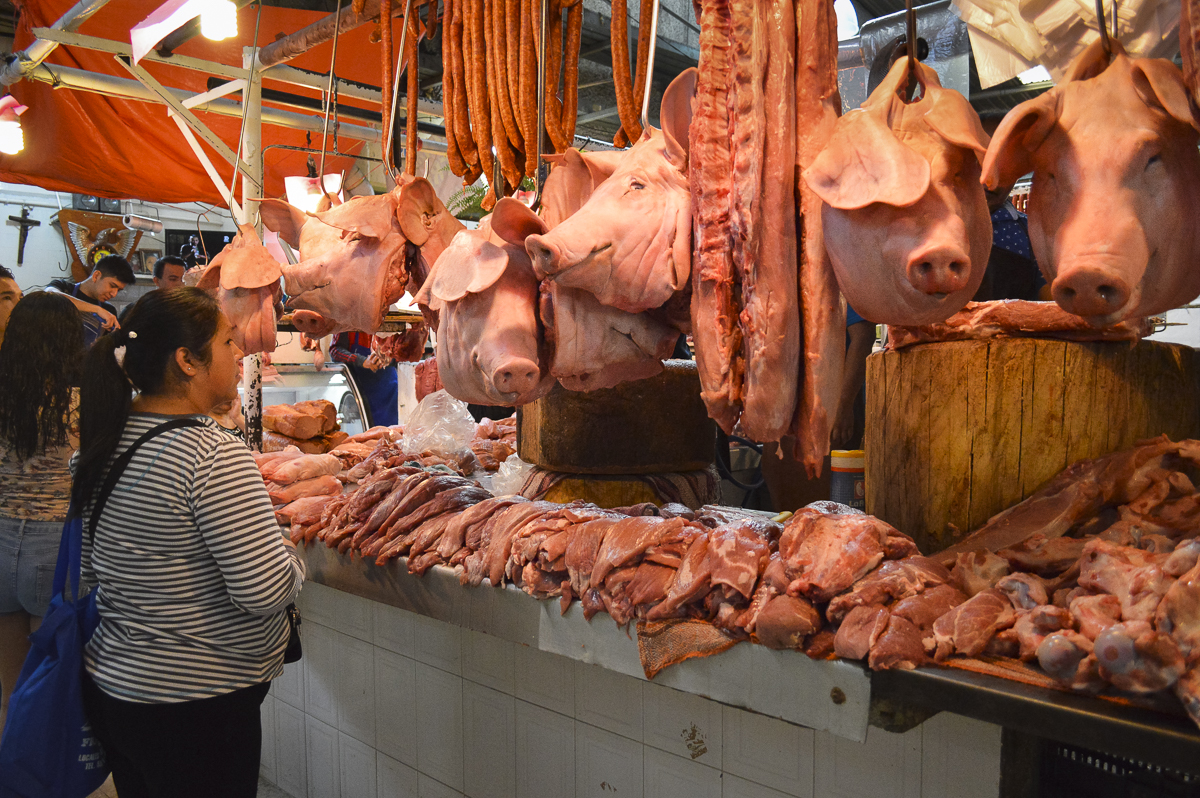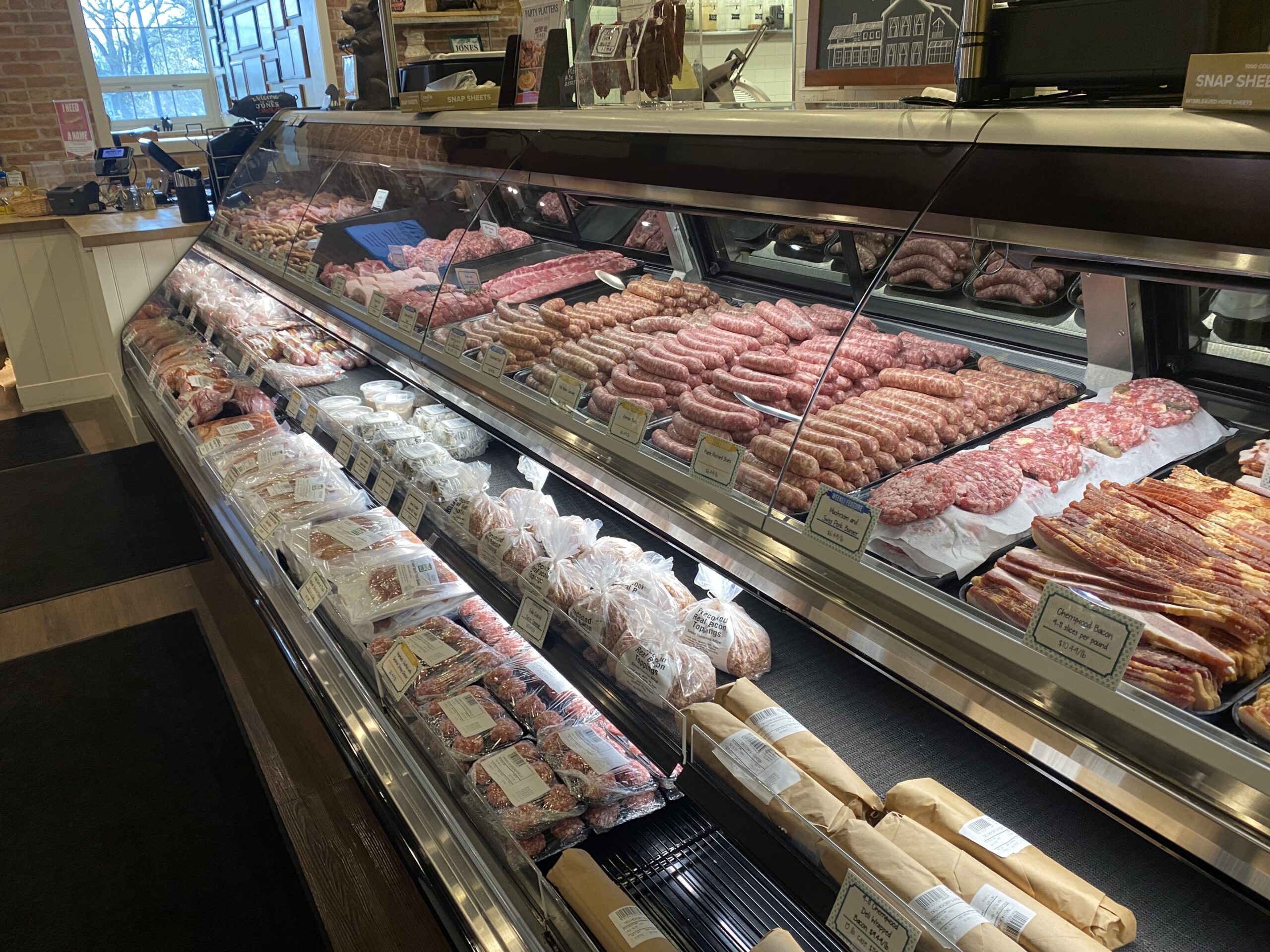Get the Best Bargains on Fresh Meat at Bagley Farms Meat Market Edwardsville IL
Get the Best Bargains on Fresh Meat at Bagley Farms Meat Market Edwardsville IL
Blog Article
Discover the Art of the Butcher's Cut in a Modern Meat Market
In the ever-evolving landscape of modern meat markets, the butcher's cut has transcended its typical roots, merging old-time workmanship with modern practices. Today's butchers are not merely processors of meat; they are educated craftsmens who highlight sustainability and moral sourcing. Their know-how in selecting and preparing cuts tailored to details cooking demands uses an unequaled dining experience. What truly sets the contemporary butcher apart is their capacity to create a deeper link in between customers and the origins of their meat. Exactly how do these masters balance custom with advancement, and what ramifications does this have for the future of meat consumption?
Development of Butchery Strategies
The development of butchery techniques shows an abundant tapestry of technology and adjustment driven by developments in modern technology, modifications in consumer demand, and a much deeper understanding of meat scientific research. Historically, butchery was a craft passed down through generations, with techniques sharpened over centuries to make the most of return and flavor. The commercial change ushered in mechanization, transforming standard practices and enabling massive handling.
The mid-20th century saw butchery techniques additionally improved by scientific understandings into muscular tissue biology and meat aging, enhancing both inflammation and preference. Technologies like vacuum product packaging and refrigeration extended item shelf-life, enabling butchers to branch out offerings and enhance top quality control. This period likewise noted the increase of specific devices, such as band saws and meat slicers, which increased accuracy and efficiency in meat handling.

The 21st century has actually presented digital innovation into the butchery realm. Digital systems now assist in monitoring animal provenance and optimizing cuts to fulfill certain consumer preferences. In addition, a renewal in artisanal butchery has emerged, mixing standard skills with modern understanding to deal with consumers looking for moral and lasting meat alternatives. This evolution emphasizes a vibrant interaction in between practice and advancement, conference modern demands while maintaining the craft's heritage.
Recognizing Meat Cuts
Recognizing the complexities of meat cuts is vital for both butchers and customers seeking high quality and worth. Each cut originates from a different part of the animal, giving unique tastes, structures, and food preparation approaches - bagley farms meat market edwardsville il. Proficiency of these distinctions not only boosts cooking experiences yet likewise maximizes the utility of each carcass. For butchers, accurate cuts show ability and respect for the craft, ensuring very little waste and optimal yield.

Understanding muscle structure is critical; muscular tissues made use of extra often by the pet often tend to be tougher and are best fit for sluggish food preparation techniques, while less-used muscle mass, like those found in the loin, are more tender and suitable for barbecuing or roasting. Familiarity with these distinctions empowers consumers to make informed options, enhancing their culinary ventures.
Selecting Quality Meat
Picking the appropriate meat includes more than just you can check here choosing an aesthetically enticing item from the screen. The art of choosing top quality meat requires a critical eye and understanding of specific features that symbolize freshness and quality.
Second of all, think about the marbling, which describes the white streaks of fat within the muscular tissue. Proper marbling is a crucial sign of tenderness and flavor, as it melts during food preparation, enhancing the meat's juiciness. Bear in mind, higher marbling often correlates with exceptional top quality cuts, such as USDA Prime.
Structure is one more critical factor; meat ought to feel strong to the touch, not slimed or extremely soft. Furthermore, be conscious of the fragrance. Fresh meat must have a clean, neutral odor, devoid of any type of sour or repulsive odors.
Combining Cuts With Cooking Approaches

On the other hand, harder cuts like brisket and chuck roast are rich in collagen, which damages down right into gelatin when prepared slowly. These cuts are excellent for braising or sluggish roasting, permitting the meat to tenderize in time and create deep, intricate flavors. Likewise, cuts such as short ribs and pork shoulder prosper with slow-cooking approaches, where prolonged cooking times change their durable textures into succulent meals.
Lamb shanks and oxtail, which call for extended food preparation to soften, are ideal candidates for cooking or slow-moving simmering. These methods coax out abundant, hearty tastes while preserving moisture. By understanding the distinct qualities of each cut, cooks and home cooks alike can elevate their culinary creations, making certain each meal is both satisfying and unforgettable.
The Butcher's Role Today
Navigating the progressing landscape of the modern meat market, the butcher's duty today prolongs past plain preparation of click here to read cuts. Contemporary butchers are culinary craftsmens, educators, and supporters for sustainable methods. They connect the space between the ranch and the fork by ensuring honest sourcing, comprehending pet husbandry, and focusing on openness in the supply chain. This shift reflects the growing customer demand for top quality over amount, where provenance and animal well-being are vital.
Along with crafting accurate cuts, butchers now engage directly with consumers, supplying cooking guidance and tailoring choices to suit specific needs and choices. Their experience in meat aging, marbling, and taste profiles encourages customers to make enlightened decisions, boosting their culinary experiences. This personalized solution exemplifies the click here to read butcher's advancing role as a relied on advisor in the kitchen.
Furthermore, butchers are essential in decreasing waste, utilizing whole pets to create diverse products such as sausages and supplies. This detailed method not only values the pet however additionally straightens with modern sustainability objectives. This way, the modern butcher personifies both practice and technology, adapting to an ever-changing market while protecting the artistry and integrity of their craft.
Final Thought
Proficiency in understanding varied meat cuts and high quality signs equips butchers to provide informed recommendations, straightening specific cuts with optimal food preparation approaches. By honoring historic methods while embracing modern demands, the butcher's duty stays crucial in today's innovative meat market.
Report this page